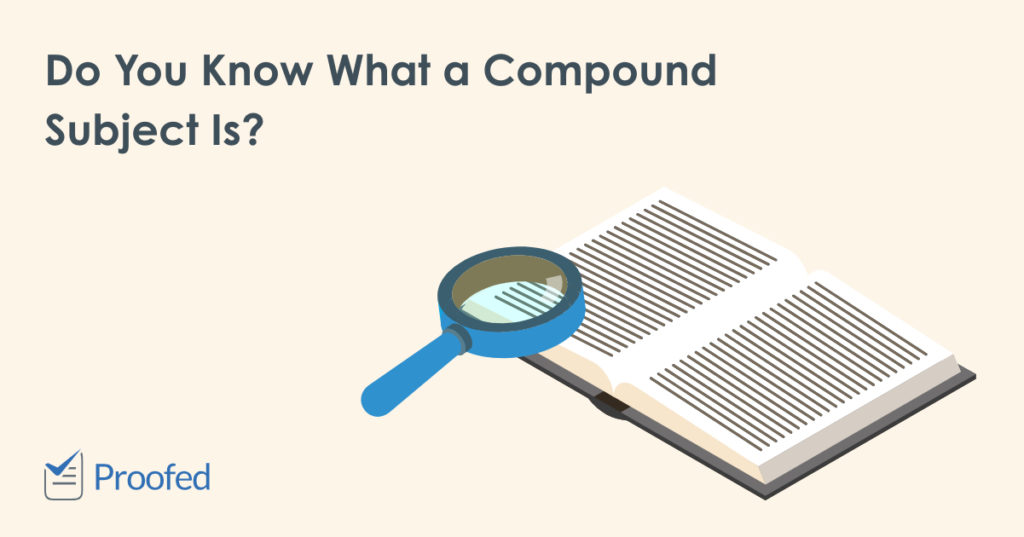Verb agreement gets tricky when it comes to compound subjects. Lucky for you, then, we’ve prepared this guide to help you avoid grammatical errors. Check out our advice on the different types of compound subject to find out how to use them in your writing.
Subject–Verb Agreement and Compound Subjects
The subject in a sentence is typically the thing or person acting. In the following, for example, the subject is “cat,” since the cat is the thing performing the action. And because there’s only one cat, we use the singular verb “is” so that the verb and subject agree:
The cat is teasing the dogs.
If the subject were plural, however, we would use a plural verb instead:
The dogs are chasing the cat.
But what about a compound subject? In simple terms, this is a subject formed when we join two things with one of the conjunctions “and,” “or,” or “nor.” But whether we use a singular or plural verb with a compound subject depends on which conjunction we use.
Compound Subjects Formed with “And”
You should almost always use a plural verb when you have formed a compound subject using “and.” For example:
The dogs and the cat are running around in circles.
As the sentence above shows, we even use a plural verb after a singular noun. This is because “the dogs and the cat” is treated as plural.
Compound Subjects Formed with “Or” and “Nor”
When you form a compound subject using “or” or “nor,” the correct verb form depends on the term closest to the verb. When this is a singular noun, we use a singular verb. For instance:
Find this useful?
Subscribe to our newsletter and get writing tips from our editors straight to your inbox.
Either the dogs or the cat is going to end up at the vet.
But when the term closest to the verb is a plural noun, we use a plural verb:
Neither the cat nor the dogs are innocent in this situation.
As such, the order of the nouns in a compound subject can be important.
Singular Compound Subjects
There are some special cases where we treat compound subjects formed with the conjunction “and” as singular. This is usually when two things are typically seen together. For instance:
Gin and tonic is my favorite drink.
Fish and chips is a traditional British dish.
In these cases, we use the singular verb “is” because “gin and tonic” and “fish and chips” are usually treated as a single thing (i.e., the terms are usually used together). Thus, if we used plural verbs in the sentences above, it would seem like we were discussing two separate things.
Check online if you’re not sure whether a phrase is singular or plural. And don’t forget to have your work proofread so you can ensure it’s error free.
